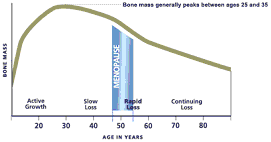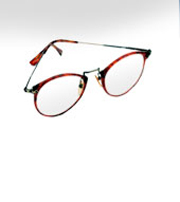 Health Education
Health Education
Health Tips
Osteoporosis
What is Osteoporosis?
Like other organs in the body, bones are constantly changing.
Throughout childhood and as young adults, bones grow in strength and in size. Around the age of 30, bones reach their peak strength and then naturally become weaker with age.
Osteoporosis is a disease of both women and men that slowly destroys bone tissue, making bones weaker and often leads to fractures. It can progress painlessly without detection until a bone breaks.
Symptoms of osteoporosis do not occur until a lot of bone strength is lost. The most visible symptom may include loss of height along with a curvature of the upper back. Osteoporosis can also result in a crippling and painful fracture, occurring most often in the hip, spine, wrist or ribs.
As we age, bone loses calcium and phosphorus, the minerals that make our bones strong. As the bone tissue becomes less dense, bones become thinner making them more susceptible to fracture.
Osteoporosis affects 28 million Americans (80% of them women). Of those affected over age 50, half of the women and 12% of the men will have an osteoporosis related fracture in their lifetime.
A woman is more likely to develop postmenopausal osteoporosis than suffer a stroke, heart attack or breast cancer. A woman can lose up to 20% of her total bone mass in the first five to seven years after menopause. Determining if you have Osteoporosis and developing a program to lessen the effects of this disease are important first steps in reducing your chance of an osteoporosis-related fracture.
Who is at Risk?
- Women who are postmenopausal
- Men with low male hormone levels
- Small body frame
- Advancing age
- Caucasian or Asian ethnicity
- Lack of physical activity
- Diet low in calcium
- Smoking or excess alcohol use
- Use of certain drugs, such as steroids
- Family history of osteoporosis
- History of a previous bone fracture
- Thyroid disease which is overactive
- Renal failure (chronic)
- Malabsorption of nutrients from the intestine
How do I know?
Osteoporosis is often called the "silent disease". There are rarely signs until a lot of your bone has been lost. A medical test that measures the density of bone present, is the best way to detect osteoporosis. A "bone densitometer" is one such test. Our bone densitometer uses small amounts of x-ray to measure your amount of bone mineral. The amount of bone mineral relates directly to your bone strength.
It is important to talk to your physician about having a bone mineral test. Even if you do not have "risk factors" for the disease, you may still be at risk for developing osteoporosis. Don't wait for a bone to break to think about osteoporosis.
Bone density testing can help your physician assess the health of your bones. Early diagnosis can make a difference in your life.
One third of a woman's lifetime bone loss can occur in the first five years following menopause. This rapid bone loss can cause bones to weaken and break.

How we measure Bone Mass?
Bone Mineral Density (BMD) measurement techniques are divided into those that assess bone density at central or peripheral skeletal sites.
The method used at the Osteoporosis Testing Center, for BMD measurement, is the Central DEXA. We use the state of the art GE LUNAR PRODIGY. It is the "gold standard" for the evaluation of BMD and the prediction of future fracture risk in patients with osteoporosis.
Our bone densitometer uses small amounts of x-ray to produce images of your spine, hip, wrist or even your whole body. The x-ray is composed of two energy levels, which are absorbed differently by the bones in your body. The technical term for the method is "Dual Energy X-ray Absorptiometry", or DEXA. A computer is able to determine from these differences how much bone mineral is present. To insure the utmost accuracy, we can measure two views of the Spine, both Hips, Hip Axis Length, Total Body Bone Mass, Orthopedic Hip Prostheses and Forearm.
Our central DEXA has several advantages over other techniques. In addition to measuring multiple osteoporotic sites, it can also measure Body Composition (% body fat) and it takes only a few minutes to complete. It is the only technique that can be used to precisely monitor changes as a result of treatment for osteoporosis or advancing age. Call for your appointment today.
Is the test safe?
Even though x-rays are used, the amount absorbed by the patient is only 1/10th of that received from a chest x-ray. The x-ray dose from our bone densitometer test is the lowest in the industry and is comparable to the naturally occurring radiation that we are exposed to in one week. CAUTION:
What information is provided?
 The bone densitometry test is an aid to your doctor in the diagnosis of osteoporosis. The test compares your bone mineral density (BMD) to that of a "young adult" at peak bone strength. It also compares your results to people of your same age, called "age matched". This information, along with other factors, helps your doctor gauge your risk of sustaining an osteoporotic fracture.
The bone densitometry test is an aid to your doctor in the diagnosis of osteoporosis. The test compares your bone mineral density (BMD) to that of a "young adult" at peak bone strength. It also compares your results to people of your same age, called "age matched". This information, along with other factors, helps your doctor gauge your risk of sustaining an osteoporotic fracture.
The difference between your result and that of a "young adult" is given as a T-score.
A panel of experts at the World Health Organization (WHO) has developed categories that define the amount of bone loss:
| T-Score | Classification |
| ≥-1 | Normal |
| Between -1 and -2.5 | Low Bone Mass - Osteopenia |
| ≤-2.5 | Osteoporosis |
| ≤-2.5 + Fracture | Severe Osteoporosis |
The DEXA test is also very useful in following bone changes. The DEXA can monitor the effects of age, diet, or treatments on your bone status. Your doctor may suggest follow-up tests to monitor change.
What is fracture risk?
 Bone mineral density (BMD) is the strongest tool to predict fracture risk, which increases exponentially as BMD decreases. Femur BMD is recognized as the strongest predictor of femur fracture risk, which has the highest morbidity, mortality and cost of all of the osteoporotic fractures.
Bone mineral density (BMD) is the strongest tool to predict fracture risk, which increases exponentially as BMD decreases. Femur BMD is recognized as the strongest predictor of femur fracture risk, which has the highest morbidity, mortality and cost of all of the osteoporotic fractures.
A decrease of 1 standard deviation (SD) in femur BMD corresponds to approximately a 3X increase in femur fracture risk. In comparison, a 1 SD decrease in spine BMD corresponds to a 2X increase in spine fracture risk.
There are a number of ways to prevent osteoporosis and to reduce your risk of fracture. Your doctor may suggest a number of steps to include exercise, changes in diet, hormone therapy, or other new and wonderful medicines known to build bone strength.
Are there other tests?
Other tests may use ultrasound of the heel to measure the status of the bone. These tests are not as accurate as the DEXA. Biochemical tests that measure bone loss may also be used for additional information in some cases.
Calcium recommendations
Calcium and Vitamin D (400-1,000 IU) are essential to strong and healthy bones. Below are the recommended amounts.
| Age | Calcium: Mg/day |
| 6 - 10 | 800 - 1200 |
| 11 - 24 | 1200 - 15000 |
| 25 - 65 Men | 1000 |
| 25 - 50 Women | 1000 |
| Post Menopausal on Estrogen | 1000 |
| Post Menopausal NOT on Estrogen | 1500 |
| Adults over 65 | 1500 |
How to get more information?
The National Osteoporosis Foundation (NOF) is one of the leading sources of information about osteoporosis and bone measurements. The NOF recommends women have a bone density test if:
- Your are over 65 years old
- Your are postmenopausal with more than one risk factor or have a fracture
- You are considering osteoporosis therapy
- You are on prolonged HRT
The NOF recommends treatment if:
- You have a T-score < -1.5 with risk factors
- You have a T-score <-2.0 with no risk factors
- You are postmenopausal with a fracture
Bone Densitometry Online to learn more from GE
- International Society for Clinical Densitometry
- National Osteoporosis Foundation (NOF)
- BONE:Official Journal of the International Bone and Mineral Society
- Osteoporosis and Related Bone Diseases~National Resource Center (ORDB˜NRC)
- National Institute of Arthritis and Musculoskeletal and Skin Diseases
- Doctor's Guide to the Internet - Osteoporosis
- OSTEOVISION®
- American Medical Association
- Vertebroplasty
- Are You at Risk for Osteoporosis? / AAPMR
- Calcium and Vitamin D: Important at Every Age / NIH
- Coping With Chronic Pain from Osteoporosis / NIH
- Exercise and Bone Health / NIH
- Exercise to Prevent and Treat Osteoporosis / AAPMR
- Falls and Related Fractures: The Risk of Undiagnosed Osteoporosis / NIH
- JAMA Patient Page:
No Bones About Osteoporosis - Postmenopausal Women Face Difficult Dilemma of Choosing Estrogen or Other Therapies / JAMA/Archives - JAMA Patient Page:
Osteoporosis - Prevent Hip Fractures / JAMA/Archives
Prime Healthcare Providers is not responsible for the content of any linked site. See our Terms and Conditions.

